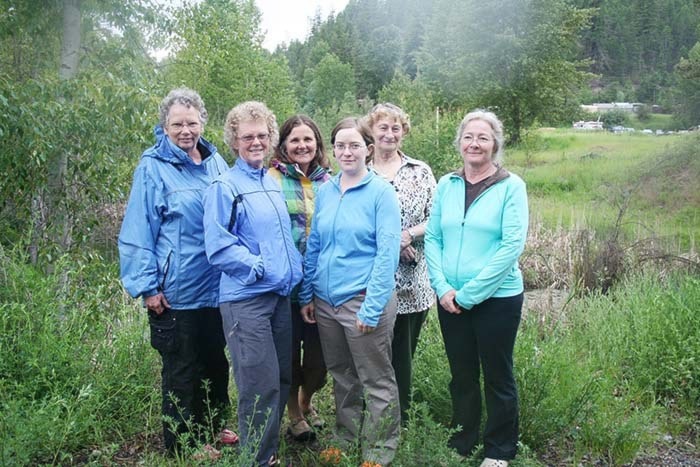There is a special and almost unique area in Princeton that requires the attention of all residents.
The reason the attention is required, is because this area, important in maintaining balance within our environment is in danger of being destroyed. It is a wetland, an area of approximately 3 hectares beside Old River Road, right alongside the Similkameen River.
Wetlands are crucial to the environment as they provide space for wildlife to live and reproduce, offer protection from flooding (space for flood run-off) and can act as a natural water purification system - filtering pesticides, sediment and other pollutants.
Wetland areas also provide recreational opportunities and a place to study nature.
Wetland losses are becoming a great concern in British Columbia. In the South Okanagan, losses have soared to 85 percent. In the Fraser Vancouver Island, it is estimated that up to 70 percent of the original wetland habitat has disappeared. Wetlands are lost due to the acts of drainage, filling, dyking and changes within wetland environment.
Most wildlife in the province use wetland habitat at some point in their life cycle, and many red-and blue-listed species are wetland-dependent. Red List: Includes any ecological community, and indigenous species and subspecies that is extirpated, endangered, or threatened in British Columbia.
Blue List: Includes any ecological community, and indigenous species and subspecies considered to be of special concern (formerly vulnerable) in British Columbia. Elements are of special concern because of characteristics that make them particularly sensitive to human activities or natural events. Blue-listed elements are at risk, but are not extirpated, endangered or threatened.
A family living close to the wetland, has for three years been observing the area. Outside of being home to such creatures like, marmots, beavers, muskrat, snakes and frogs, the Lahaie family has both observed and recorded 76 varieties of birds there.
The wetland along the Similkameen River has for quite some time, been being filled and polluted with garbage, metal and other materials. During the Earth Day clean up event held in April of this year, a trailer full of trash and debris was removed from the wetland. The area is clearly marked with “No Dumping” signs, but they have obviously been ignored.
A group of women involved with the April clean-up and others who share concern for the wetland and the community are hoping to create awareness and to bring about an understanding of how crucial it is to preserve it.
Kelley Cook, Johanna Nott, (Vermilion Trail Society) Judy Short, (Princeton Rotary) Marjorie Holland, (Princeton Arts Council) and Amanda and Cathy Lahaie ( Vermilion Forks Field Naturalists) also wish to honour a long time resident of Princeton, who passed away in March of this year. The wetland area is to be dedicated in his honour—to be named, “Cormack Marsh.”
Robert Bremner Cormack was a dedicated member of the community who served as principal to the schools, chairman of the hospital board and was a member of both the Royal Canadian Legion and the Princeton Rotary Club for fifty years. He enjoyed drawing and painting and sharing his work with the community. Nature seemed to be his muse. “The river paintings, he did are the most interesting,” said his son Alan Cormack.
Cormack said his family will be pleased with this honouring of his father. “It’s nice to get that tribute”, he said, “Dad would appreciate that.”
The group of ladies wish to create a kiosk containing information about the wetland, complete with some reproductions of Robert Cormack’s paintings. They would also like to install a bench for those who wish to, to sit and enjoy the beauty that Cormack Marsh has to offer.
If you are interested in providing a donation to assist or have a copy of a Robert Cormack painting to lend for reproduction, please give Marjorie Holland a call at 250-295-6718.
For more information on wetlands and the importance of them to the environment, please visit www.env.gov.bc.ca/wld/wetlands.html
